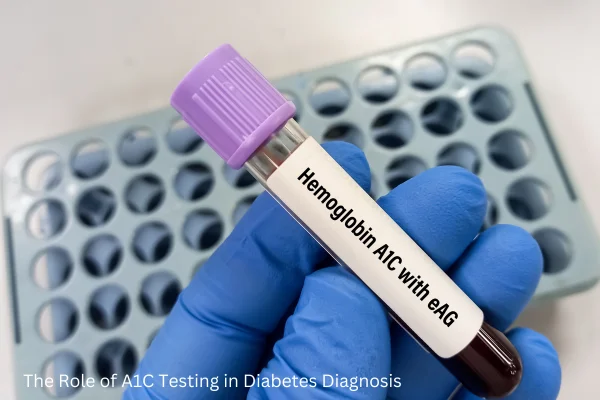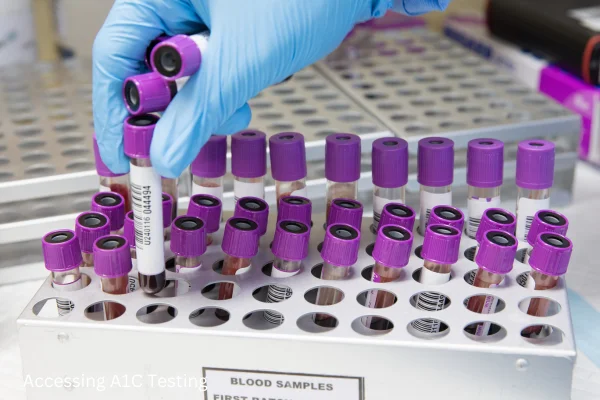How A1C Tests Play a Big Part in Spotting Diabetes
Alright folks, let’s sit down and talk straight about something many folks across America wrestle with every day. This issue can creep in quietly, especially when attention drifts or warning signs get brushed aside. It brings good days mixed with rough ones, and emotions can swing just as much as routines do. When it shows up, it often asks for patience, awareness, and honest reflection. Ignoring early hints only lets trouble grow louder over time. Paying attention early gives folks a stronger chance to stay steady, make smart choices, and keep control in their own hands. Facing it head-on beats pretending nothing feels off, because awareness today can make tomorrow far easier to handle.
Right in middle of all this, one routine check really deserves attention. It may look simple, yet it carries far more meaning than most folks expect. This small step can shift everything. It reflects how things have played out across past weeks, not just one passing moment. While other checks offer a quick glance, this one shares a deeper view—more like reading an entire story instead of skimming a cover. That broader picture gives people clarity, confidence, and a better sense of direction moving forward.
It’s reliable, steady, and helps folks and their doctors stay ahead of issues instead of always playing catch-up. Think of it as a trusty compass guiding a ship before it hits rough waters. Over a long haul, having something that offers a clear picture is worth its weight in gold.

Curious about A1C test?
Let’s break it down, plain and simple. Picture blood as a busy freeway, delivering oxygen to every corner of your system. Hemoglobin, red blood cell superstar, acts as a car for this vital delivery.
Now, imagine sugar molecules hitching a ride on these hemoglobin vehicles. This process, called glycation, is where this particular check-up comes in. It provides average blood sugar levels over past 2–3 months, offering a fuller snapshot than other tests like fasting plasma glucose (FPG) or oral glucose tolerance test (OGTT). Biggest advantage of this check-up lies in its convenience, stability against short-term swings, and its timeframe that goes beyond immediate blood sugar changes.
A1C and Diagnosis
Alright, let’s talk numbers for a moment. Breaking down these percentages feels a bit like solving a puzzle—they offer hints about what might be going on inside. When results land below 5.7%, things usually look steady. Readings from 5.7% up to 6.4% often signal a caution zone. Once numbers reach 6.5% or higher, that’s a clear warning worth noticing. Still, no need to panic right away. One elevated result doesn’t lock anything in place. Most of time, additional checks follow to piece together a clearer, more accurate picture.
Just a heads-up: while this check can be a solid tool for spotting trends, it’s not always right for everyone. Certain factors—like specific blood-related issues or pregnancy—might make results less clear. It’s always smart to consult with a provider before relying too heavily on numbers.
Diabetes Chart
| Level (%) | Status | Description |
| Below 5.7 | Normal | No issues with it or being at risk for it. |
| 5.7 – 6.4 | Prediabetes | Increased risk of developing it. |
| 6.5 or higher | Diabetes | Requires medical intervention |
How It Helps You Stay on Track
Now, here’s where this little check-in becomes your right-hand pal in that ongoing battle you’re facing. Keeping an eye on things regularly isn’t just about spotting what’s going on—it’s your personal roadmap to staying steady. Think of it like your own GPS, guiding your doctor to put together a plan that fits your needs just right. It’s that behind-the-scenes hero helping you dodge serious issues and, in some cases, slow things down before they pick up steam. And the wild part? Depending on what you’re working with and how your body ticks, your targets might look a bit different than someone else’s.

Figuring Out Where You Can Get Yours Checked
Wondering how to get your hands on that little checkup tool everyone’s talking about? You’ve got options, friend. One route is visiting your doctor’s office for a quick lab visit. If you prefer staying at home, there are kits you can use right in your own space—easy as pie. Just a heads-up: it’s smart to check in with your provider beforehand to make sure readings are interpreted correctly. And don’t stress too much about cost—most insurance plans help cover it.
| Access Method | Description |
| Doctor’s office | Easiest way to get it checked is by swinging by your doctor’s office. |
| Laboratory | Can be ordered directly by patients without a doctor’s visit. |
| Mail-order testing | They send the kit right to your door, and you just mail your sample back in. |
| Pharmacy | Some pharmacies let you get it checked right then and there. |
How Much You’ll Pay to Check Yours
| Insurance Coverage | Average Cost |
| With insurance | $10-$20 |
| Without insurance | $40-$60 |
Can food or drinks mess with this kind of reading?
Not really, and that’s what makes this check-up so handy. Unlike some other readings that require fasting or careful timing, this one looks at trends over a couple of months. So, if you had a big slice of pie last night, it won’t throw things off. What it really captures is how your choices stack up over time—not just a single moment. That makes it a reliable buddy for tracking patterns.
How does this screening differ from that other one where you have to drink a very sweet liquid?
Great question! That other screening works more like a challenge—it shows how your system reacts in real time. You drink a very sweet mix, then levels get checked at several points. It focuses on an immediate response.
This one, discussed here, takes a wider view. It reflects how things have been trending over a few months, not just during one day. Both approaches serve different purposes, depending on what a doctor wants to understand.
Conclusion
So here we are, wrapping things up. If there’s one takeaway, it’s that knowing what’s happening inside you matters—a lot. When you have a clear picture, you can take meaningful action. That little insight from your latest check-up? It can guide daily choices and long-term plans.
Talk it over with your doctor, share your numbers, and don’t hesitate to ask what they really mean for you. This kind of self-awareness is like having a built-in compass—it points you in a right direction when things feel uncertain.
You’ve got what it takes to look out for yourself, make informed choices, and keep everything on track. Until next time, keep learning, stay steady, and remember—you’ve got more control over your well-being than you think.
Author Bio: Dona Harris
Say hey to Dona Harris—the gal next door who’s all about making self-care feel less like a chore and more like second nature. She breaks things down in a way that clicks, kind of like chatting with a good friend over coffee. With a heart for helping folks take charge of how they feel, she’s always rooting for better habits, smarter choices, and staying in tune with your body. If you’re looking for someone who can guide you through life’s ups and downs with real talk and real insight, Dona’s your go-to. Stick around—she’s got more everyday wisdom coming your way.
Referrals:
General Information:
World Health Organization (WHO)
Centers for Disease Control and Prevention (CDC)
Checking Your Sugar Levels:



